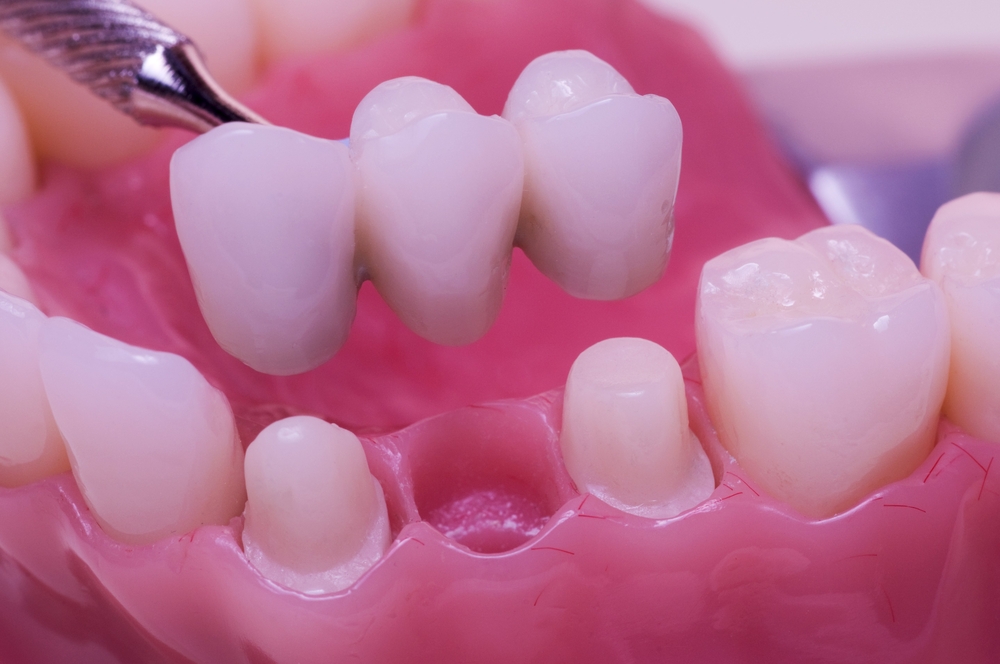Bridges just aren’t for crossing the water, they are also for your teeth! If you have a tooth pulled or are missing one or more teeth for any other reason, you may need a dental bridge. This restorative dentistry is used not just to restore your full smile, but can help improve chewing and speech and also prevent your other teeth from moving out of place.
The 3 Types of Dental Bridges:
1.Traditional Bridge
A crown caps the natural or false teeth on each side of the missing tooth or teeth, with the pontics (false teeth) in the middle. Natural teeth are filed down to accommodate the caps.
2.Cantilever Bridge
Generally used to replace only one tooth, a cantilever bridge is used when there isn’t enough room to place two crowns on both sides of the gap. A tooth (or teeth if extra support is needed) on only one side is capped to bond the pontic to the other teeth.
3.Maryland/Resin-Bonded Bridge
In a resin-bonded bridge, the pontic has “wings” that bond to the back of the adjacent teeth. This type of bridge isn’t as strong or permanent, but they require the least amount of alteration to the adjacent teeth.
A dental bridge is joined permanently to the surrounding teeth. As opposed to dental implants, dental bridges do not require surgery. With dental implants, false teeth are connected to the actual jaw bone. There is a simple, standard procedure to receiving dental bridges.
The Process: What to Expect
On your first visit, the dentist will file down your teeth to accommodate the crowns. A mold will be made so that your bridge can be created accurately and fit into your mouth comfortably. You will receive a temporary bridge to protect the gap and the teeth that were filed down. Once the bridge is made, you will return to the dentist and have the permanent bridge fitted and cemented to your teeth. There may be extra visits required to make sure the bridge fits correctly.
The Benefits
Regardless of the type, dental bridges offer many benefits. They are less expensive than alternative treatments (like dental implants) and they restore the aesthetics of your smile. Bridges also prevent your natural teeth from sliding out of place by filling in the gaps.
Dental bridges can last somewhere between five and fifteen years, maybe even longer. The most important thing to do is to maintain good oral care to increase the longevity. Brush your teeth twice a day and floss once a day. It is important to floss underneath your dental bridge as well because food particles that get stuck underneath the bridge can harm the natural teeth around the gap. Also, visit the dentist at least twice a year for a deep cleaning and checkup.
To find out more about dental bridges or to set up an appointment, contact Greenspoint Dental in Houston, Texas today.

